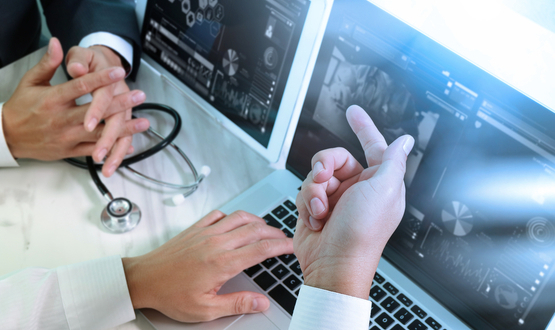Recent advances in artificial technology have led many to believe that AI has the potential to replace human radiologists one day. Already, we are now at a level where deep learning neural networks can identify irregularities by scanning radiological images, which in some cases yield better results than an average radiologist. Even so, what’s considered reliable these days is a system that can perform as good as a human being would, which in most cases is only used for research.
It’s undeniable, however, that deep learning is magnificently evolving day by day, and it’s something that we all should be grateful for considering its huge assistance to medical image analysis. This alone makes AI an important part of radiology.

The practice of radiology would definitely benefit from AI technology in terms of interpreting several images as once and fast. Over the last decade, we’ve seen a growth of the number of images more than the number of radiologists. Today, we can take hundreds of images from a patient’s injury or disease. This can be really expensive, which means if there are ways to conserve cost, human labor, and enhance the accuracy of diagnostics, these methods would be welcomed with open arms.
But should this worry radiologists? There are reports of medical students developing anxiety over AI tech, believing that this type of technology will eventually replace radiologists and that the profession will no longer be relevant in the future.
AI can be easily seen as a threat, but it won’t wipe out all the radiologists on the planet. Their jobs, however, will be enhanced and altered by AI.
Below are the three main reasons why diagnostic radiology is here to stay and why medical students should not avoid this field as a career choice.
Radiology is more than just looking at images
At this point, it should be made known to all, especially those saying that AI will replace radiologists, that radiology isn’t just about looking at pictures! What you see in the media regarding how they relate AI and radiology only pertains to the image perception aspect of the field.
Image perception is not the entirety of radiology work. These professionals can also perform discrepancy review, do audit, training and teaching, tumor boards, drains, biopsy, fluoroscopy, ultrasound, and many others. Essentially, radiologists deal with both multi-disciplinary work and patient-facing work. In fact, you won’t find a radiologist who only does diagnostic reporting as his only job. You can even find interventional radiologists, which is more on surgery than just image perception.
Diagnostics can definitely benefit from AI and may replace some functions like scheduling, but it’s a far cry for the profession to be replaced entirely. Unless of course, we somehow managed to create a system that can control and oversee the whole aspects of diagnostic.
Artificial intelligence is a huge step to developing more of what radiology can do, but replacing the entire clinical workflows doesn’t seem like an executable idea.
There’s a great need for human oversight
A commercial airplane accident that took place in 2017 resulted in zero casualties and gave the world one more amazing story to tell, thanks to the integration of high-tech systems that automate a lot of the tasks usually performed by pilots and staff, including enhanced air traffic control systems, improved ground proximity warning systems, and collision avoidance systems. The safety of passengers was also guaranteed due to the performance of the pilots and aviation staff who all received proper training, had the knowledge to alert or escalate concerns, and the awareness of safety issues.
When applied in medicine, the decision support is best left to qualified humans than simply leaving it to an AI system. As of now, there is no existing AI system qualified to make medical decisions, unless what needs to be considered is something minor and not life-threatening.
Expecting that an AI system will be 100% accurate in solving diagnostic questions is futile since medicine is partly an art that will take way too long to be fully solved or quantified. There’s always going to be need for human intervention and decision making, and at the end of the day, we are comforted with human oversight.
An increase in productivity will boost demand
If we create a system that will improve the workflow of radiology and diagnostic turnaround, it guaranteed there’s going to be an increase in demand for radiologists.
Yes, AI has become the new norm in radiology. Waiting lists are fewer, scan times are faster, and radiology reports have become more accuracy and extremely useful. If these are maintained or improved, we will continue to witness an increase in demand for radiological services.
We must encourage med students to pursue radiology in order to keep up with the tons of images being requested and data being produced. There might be a need to obtain two or three accreditations in other data-producing qualities such as genomics and pathology, a guarantee that there are always tasks waiting to be completed.
It’s possible that radiologists will be called differently in the future. However, this doesn’t mean they will forever be left without a job. A human element is still needed in the profession to control the flow of data, assess the status of the patient, and make decisions based on the situation and experience of the professional.
We don’t know what AI technology has in store for all of us, but we can all agree that in radiology, the judgment of a human may be necessary.